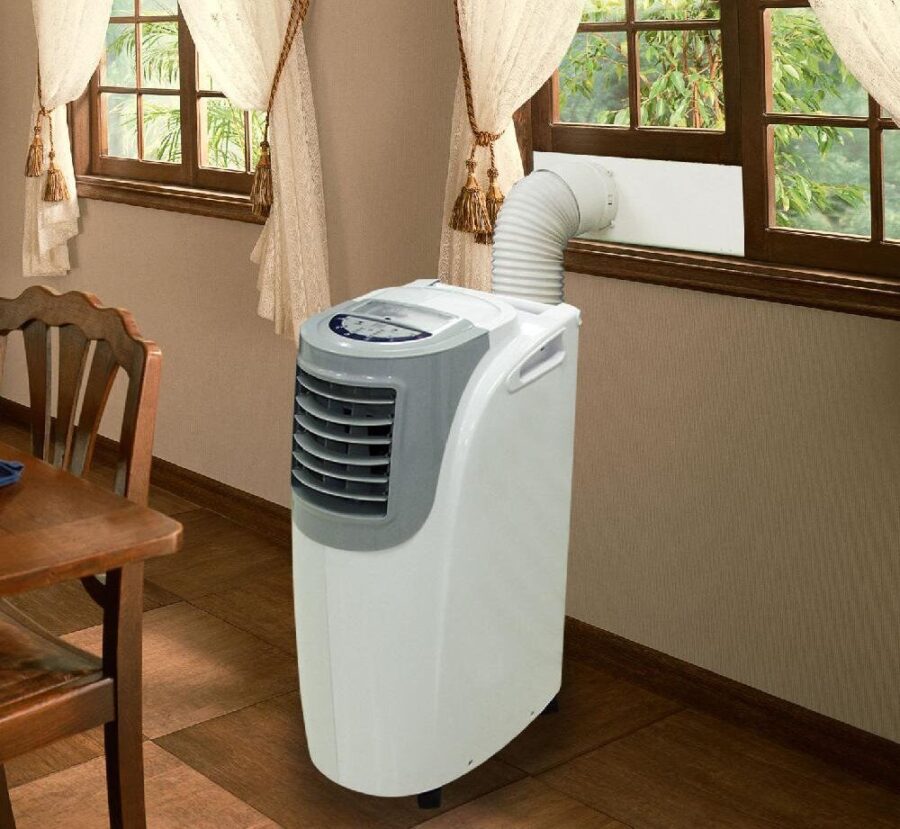Understanding How Single Hose Portable Air Conditioners Work
How Does a Single Hose Portable Air Conditioner Work?
Welcome to this informative article on the inner workings of a single hose portable air conditioner. If you’ve ever wondered how these compact cooling devices function, you’ve come to the right place. In this article, we will delve into the mechanics of single hose portable air conditioners, providing you with a comprehensive understanding of their operation.
Single hose portable air conditioners are popular cooling solutions for small spaces, offering convenience and flexibility. Understanding how they work can help you make informed decisions when selecting and using these devices.
Throughout this article, we will explain the key components and processes involved in the functioning of a single hose portable air conditioner. We’ll explore the air circulation, exhaust system, and condensation management, providing you with a clear picture of how these units operate.

It’s important to note that while single hose portable air conditioners are effective cooling options, they do have limitations. We will discuss these limitations honestly and provide practical recommendations to maximize their efficiency and lifespan.
So, let’s dive in and unravel the mysteries behind the operation of a single hose portable air conditioner!
The Mechanics of a Single Hose Portable Air Conditioner
When it comes to cooling small spaces, single hose portable air conditioners offer a convenient and efficient solution. These compact units work by utilizing a simple yet effective mechanism to cool the surrounding air. Let’s explore the key components and processes involved in the operation of a single hose portable air conditioner.
Air Circulation
The first step in the cooling process is the circulation of air within the room. The air conditioner draws in warm air from the environment through an intake vent located on the unit. This warm air is then passed through a series of filters that help remove dust, allergens, and other particles, ensuring cleaner and healthier air.
Once the air is filtered, it is directed towards the cooling coil. The cooling coil contains a refrigerant, typically a chemical compound with excellent heat absorption properties. As the warm air passes over the cooling coil, the refrigerant absorbs the heat, causing the air to cool down.
Exhaust System
As the air is cooled, the excess heat absorbed by the refrigerant needs to be released outside. This is where the exhaust system comes into play. Single hose portable air conditioners feature a single hose that serves a dual purpose: expelling hot air and drawing in fresh air from outside.
The hot air, carrying the absorbed heat, is expelled through the exhaust hose, which is typically positioned near a window or vent. This process ensures that the cooled air remains inside the room while the hot air is efficiently vented outside.
Condensation Management
During the cooling process, moisture in the air condenses on the cooling coil. To manage this condensation, single hose portable air conditioners employ different techniques. Some units collect the condensed water in a built-in reservoir, which needs to be manually emptied periodically. Others utilize a self-evaporative system that evaporates the condensate, eliminating the need for manual drainage.
It’s important to note that while single hose portable air conditioners effectively cool the air, they do introduce a small amount of humidity back into the room due to the condensation process. This can be beneficial in dry climates but may require additional dehumidification in more humid environments.
Conclusion
Single hose portable air conditioners provide a practical cooling solution for small spaces. By understanding their mechanics, you can make informed decisions when selecting and using these devices.
Key takeaways from this article include the importance of air circulation, the role of the exhaust system in expelling hot air, and the various methods used to manage condensation. It’s crucial to consider the limitations of single hose portable air conditioners, such as their slight introduction of humidity and their suitability for specific room sizes.
By following proper maintenance and usage guidelines, you can maximize the efficiency and lifespan of your single hose portable air conditioner, ensuring a comfortable and cool environment during hot summer days.